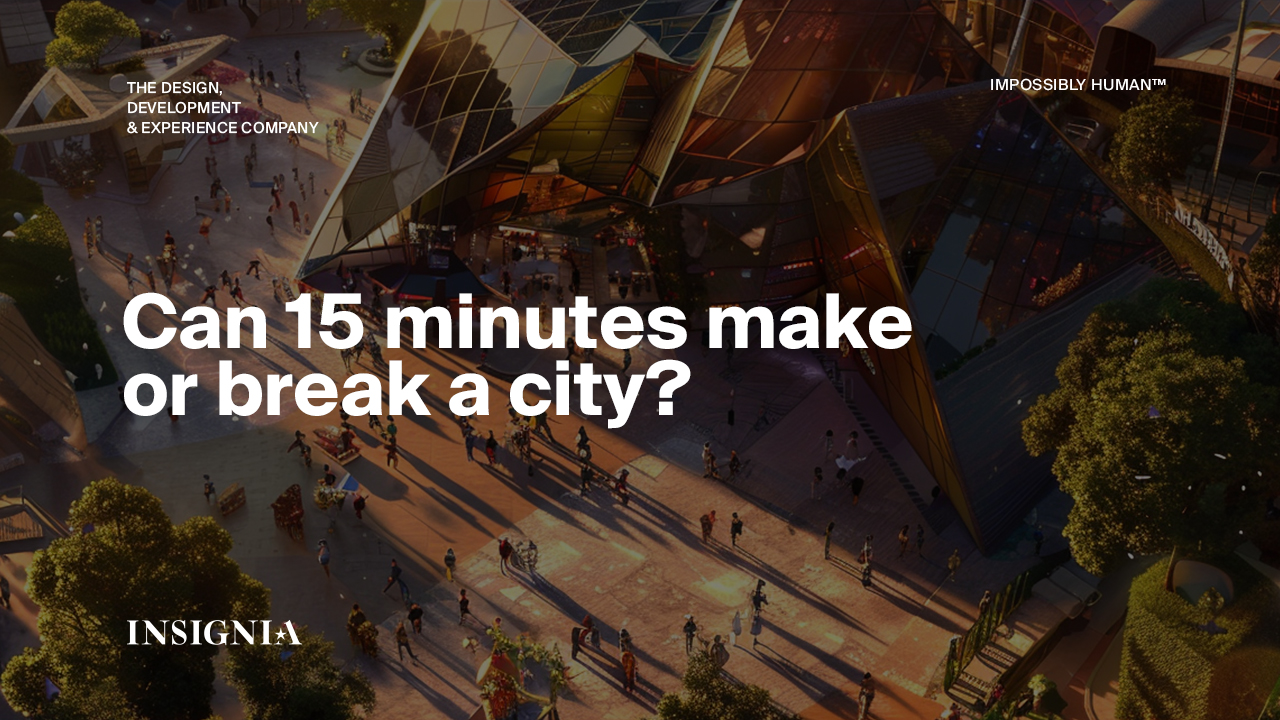The City of Oxford, renowned globally for its thousand-year-old university, has long been a beacon of enlightenment. Its recent decision to drop the term ‘15-minute city’ from its planning documents, therefore, is somewhat surprising.1
Coined by Carlos Moreno in 2015, this urban planning strategy is aimed at fostering more habitable cities by ensuring that residents have access to essential services such as schools and stores within a 15-minute walk from their homes.
Despite its potential to enhance urban living, Oxford City Council may have been swayed by conspiracy theorists insisting the concept is designed to restrict residents’ freedom of movement. We beg to differ.
The Essence of the 15-Minute City Concept
At its heart, the ’15-minute city’ addresses the demand for more human-centric and approachable urban environments where ease and access are fundamental, not optional. The advantages are numerous:
Reduction of Carbon Emissions
By shortening travel distances and promoting non-motorized means of transport, this strategy contributes to a notable decrease in greenhouse gas emissions.
Empowerment of Local Economies
The vitality of small enterprises boosts when the local populace patronizes them, building a strong sense of community and economic durability.
Enhancement of Public Health
Encouraging walking and cycling as primary modes of transport has the potential to reduce the prevalence of chronic health conditions.
Universal Accessibility
Giving precedence to pedestrian pathways ensures inclusivity for individuals facing mobility impairments, allowing them unimpeded access across urban settings.
Fostering of Social Connections
This urban design promotes increased interactions among inhabitants, thereby reinforcing communal ties.
Rejuvenation of Urban Environments
Reallocating spaces for green areas, walkways, and communal zones improves the aesthetic appeal and habitability of urban areas.
Reduction in Vehicle Reliance
Encouraging the use of public and active transportation methods leads to a more eco-friendly urban transport system.
Expanding Beyond the 15-Minute Vision
In contrast to Oxford, NEOM’s THE LINE project aims to exceed the 15-minute city concept by ensuring the availability of all life’s necessities within just a 5-minute journey from any residence.
This innovative approach anticipates the future trajectory of urban planning. By reimagining the foundational principles of urban development, THE LINE exemplifies a commitment to urban environments designed to enhance quality of life, bolster community integration, and ensure the health and well-being of every resident. All without the need for the motor car.
At Insignia, we hope that such projects act as inspiration, dispelling the myths and misconceptions around the future of urban livability.
Let us hope that Oxford – once dubbed the city of dreaming spires – can learn to dream again.
Insignia Worldwide crafts new realities at the intersections of strategy and storytelling, by challenging what is humanly possible and creating what is Impossibly Human.TM
1 localgov.co.uk
